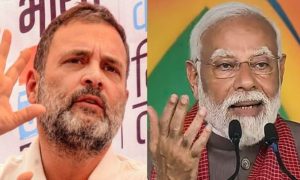India’s manufacturing sector experienced an uptick in growth during November, rebounding from a recent slowdown, according to the Manufacturing Purchasing Managers’ Index (PMI) compiled by S&P Global.
Read More: Lending rates rise faster than deposit rates in October
The PMI rose to 56.0, indicating a robust expansion and maintaining a positive trend for nearly two and a half years, with a reading above the 50-mark separating expansion from contraction.
Pollyanna De Lima, Economics Associate Director at S&P Global, noted, “India’s manufacturing economy is clearly in good shape as 2023 draws to a close, with expectations for a continued strong performance in 2024.”
This aligns with India’s overall economic performance, having recorded a robust 7.6 per cent growth in the last quarter, positioning the country as one of the fastest-growing major economies this fiscal year.
Key indicators contributing to the sector’s growth include the acceleration of output and new orders in November, both essential components for assessing demand. Job creation also saw an uptick, marking the eighth consecutive month of expansion in this aspect.
The confidence level for business prospects over the next 12 months remained strong, although it experienced a minor dip, reaching a seven-month low. This adjustment was attributed to concerns about rising inflation expectations.
Read More: Indian IT sector focusing more on hiring apprentices to cut costs, shows report
While domestic demand remained resilient, international demand faced challenges, leading to new export orders hitting a five-month low. Despite the slowdown in export orders, the overall positive performance of India’s manufacturing sector has contributed to a favorable economic outlook.
Addressing the dynamics of input costs, De Lima highlighted that costs grew at the slowest pace since July 2020. However, this relief did not entirely translate into reduced output prices, as the rate of output price inflation only eased to a seven-month low.
The report suggested that while raw material and component prices increased in November, improved availability at suppliers, coupled with subdued global demand for inputs, contributed to a considerable retreat in cost pressures.
The backdrop of this economic scenario is the ongoing vigilance regarding inflation in India. Retail inflation eased to a four-month low in October but remained above the Reserve Bank of India’s 4 per cent medium-term target.
Read More: Bengaluru Schools Get Bomb Threat On Mail, Students Evacuated
RBI Governor Shaktikanta Das has highlighted the nation’s vulnerability to “recurring and overlapping” food price shocks and reiterated the central bank’s commitment to vigilantly aligning inflation with the target while supporting economic growth.



































